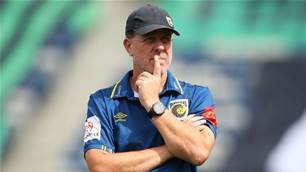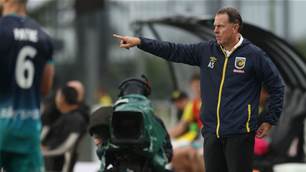With furore over stagnant W-League crowds, poor timeslots and difficult locations, we took a look at why FFA and W-League clubs make the choices they do.
If double-headers are to take place, there is often little other option left for FFA and Fox Sports, as it's seen as less ideal for a W-League game to start at 9.30pm.
Meanwhile, if they swap the A-League game to 5pm, the W-League would get a bigger crowd, but the A-League crowd would drop significantly more than the W-League would increase.
This means FFA would lose more money overall for the game, which makes it harder to subsequently fund the W-League. The W-League is partly funded by monies generated by the A-League.
There have also been stand-alone games at 7-7.30pm on Friday nights this year, which is prime time football.
Adelaide against reigning champions Sydney FC in Round Two drew 784 fans and Perth against Canberra in Round Five only drew 365 people.
Last season, a stand-alone Friday night prime time Melbourne Derby at the boutique and easily accessible AAMI Park, between then reigning champions Melbourne City and powerhouse Victory, only drew 1,619 people.
These are only small samples, but it goes to show that playing W-League games at optimal times doesn’t always work.
Now if we look at the Sunday times...

This year, games have ranged from 4pm to 6pm kickoff times. Sunday afternoon at this time are not necessarily bad times.
Families are seen to have done their chores or hobbies for the weekend and can go along and enjoy some football to round out the weekend.
But this hasn’t appeared to work either. With the Sunday afternoon stand-alone games averaging around 1,500 this year.
What about Saturday nights? Young families can go out as well as young adults. Kids won’t get home too late and the young adults can go out after.
However again, it seems this time isn’t ideal for the bulk of fans, with crowds not any better than the other time slots mentioned.
Related Articles

Stajcic lands Wanderers job as Lederer quits

Pelligra's $4m annual Perth Glory pledge seals takeover deal













